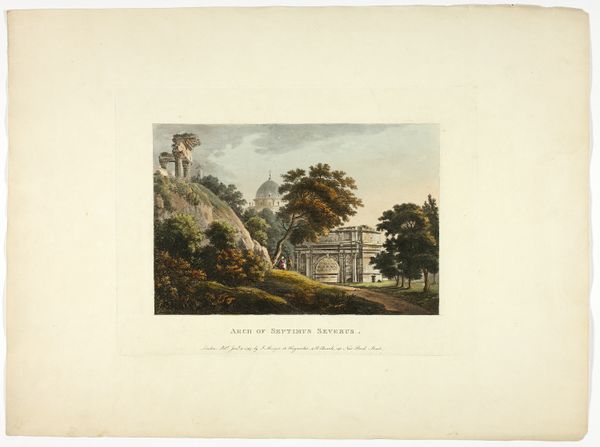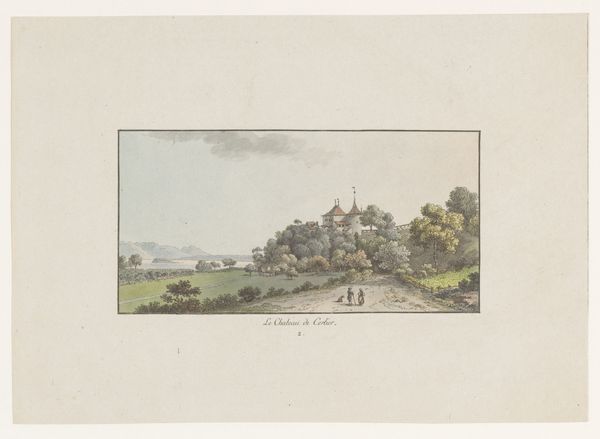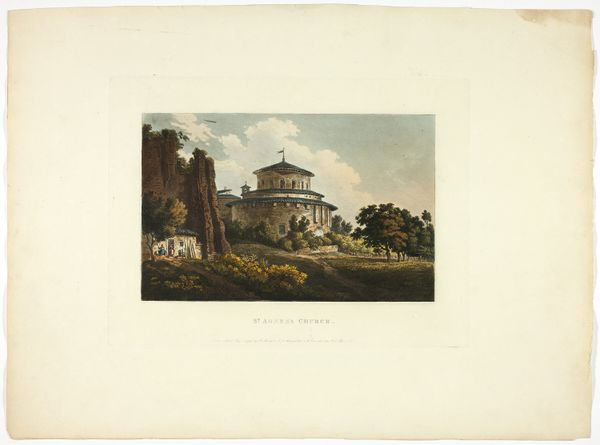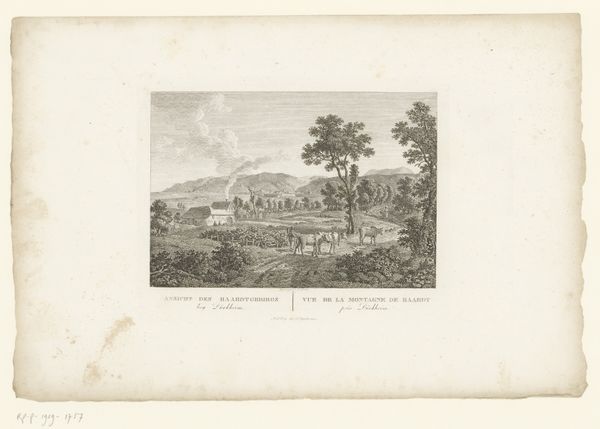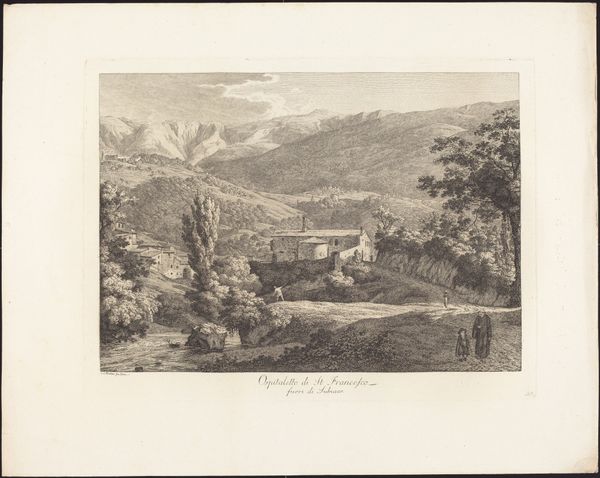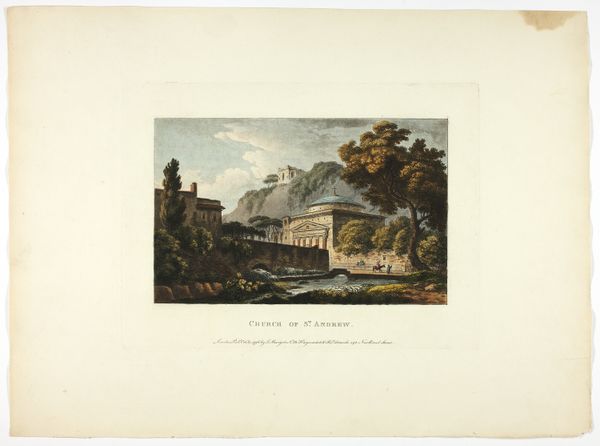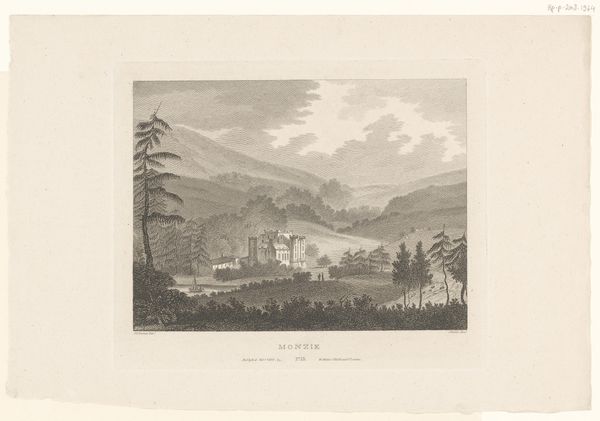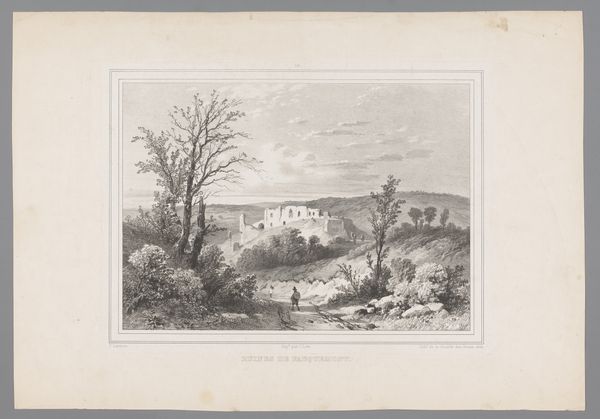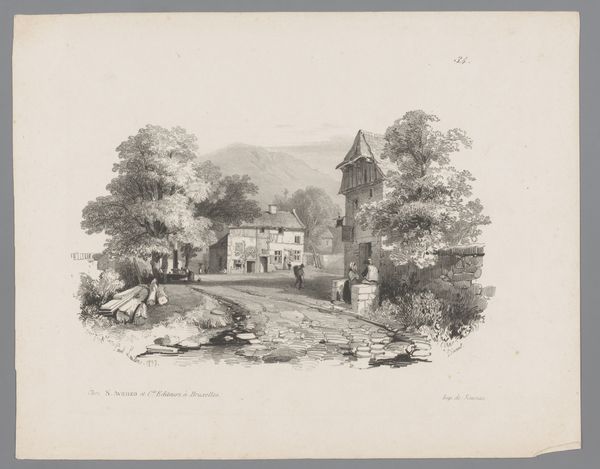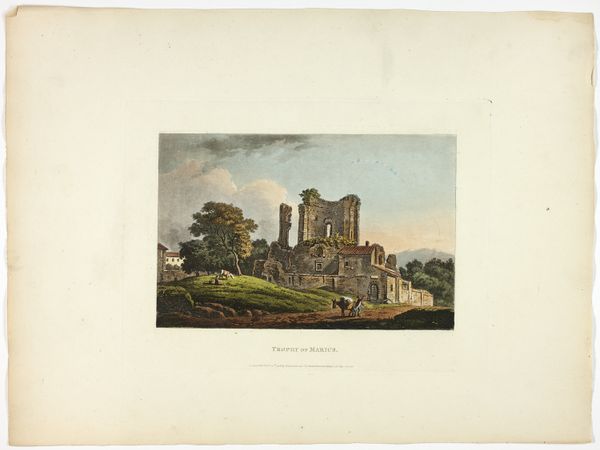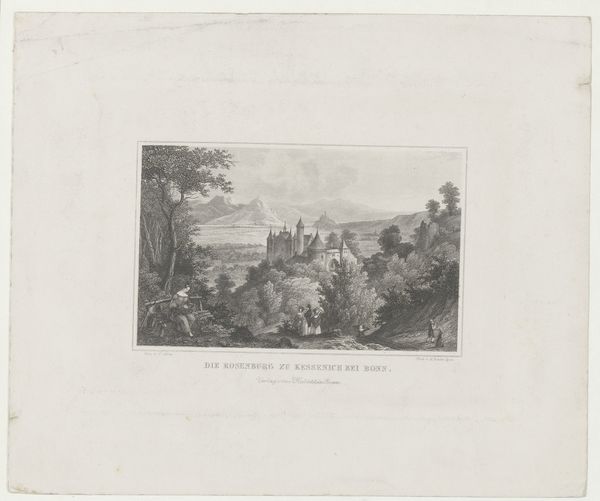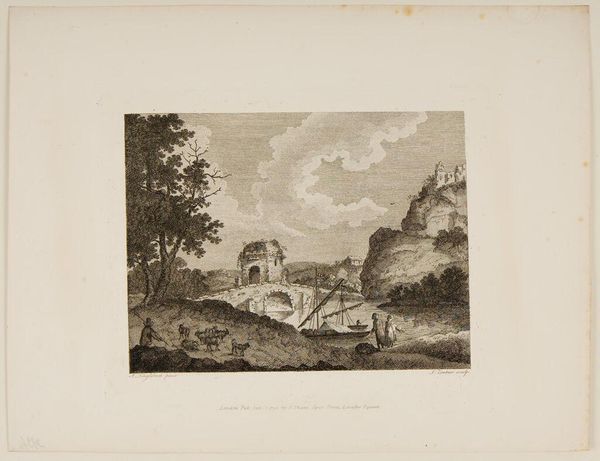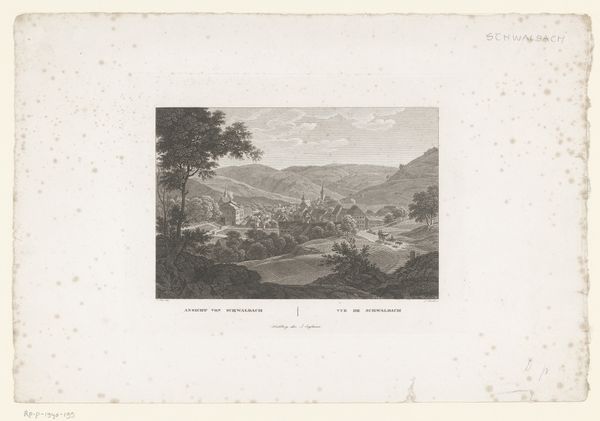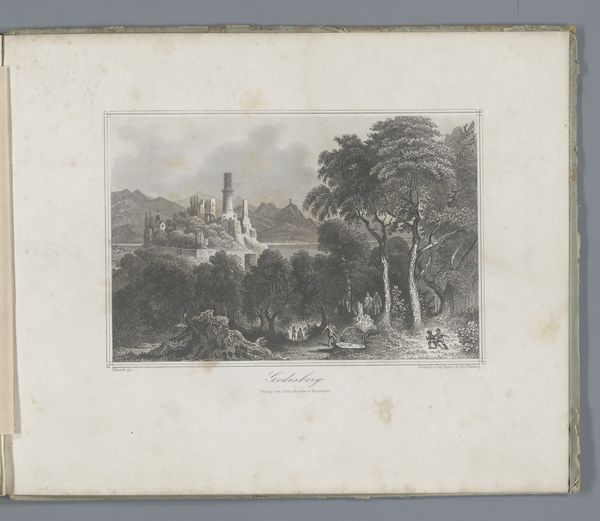
Temple of Remus and Romulus, plate sixteen from the Ruins of Rome Possibly 1796
0:00
0:00
drawing, print, paper, watercolor
#
drawing
#
neoclacissism
# print
#
landscape
#
paper
#
watercolor
#
cityscape
#
watercolor
Dimensions: 330 × 448 mm (sheet)
Copyright: Public Domain
Editor: This print by M. Dubourg, titled "Temple of Remus and Romulus, plate sixteen from the Ruins of Rome," possibly from 1796, depicts a landscape with architectural ruins rendered in delicate watercolor. What strikes me is how serene the scene feels, even with the ruined temple and castle looming in the distance. What do you see in this piece? Curator: I see a powerful layering of time and cultural memory. Notice how the temple, dedicated to the mythical founders, stands amidst verdant growth, echoing the cyclical nature of empires and the relentless advance of nature. What feelings are evoked when considering its relationship to the crumbling fortress on the hill in the background? Editor: There's a sense of wistful romanticism; perhaps a subtle nod to the transience of power, compared to the natural world, constantly adapting, reclaiming and regenerating. Curator: Precisely. Dubourg seems interested in portraying the *idea* of Rome, its iconic presence within the 18th century’s evolving understanding of its significance, versus portraying the historical specificity, using ruin imagery. It's less a topographical study and more a psychological landscape of collective European cultural identity. Where do you think its continuity resonates most acutely in our present society? Editor: The fact that it’s still important for us to understand Neoclassicism, it shows continuity but, also demonstrates shifts of value over time as our view changes? Curator: It truly invites reflection on how we negotiate the enduring allure of historical narratives against a changing contemporary landscape, a negotiation that never really stops, does it? Editor: Absolutely. It's interesting how visual imagery and iconography shape our understanding of history itself. Thank you!
Comments
No comments
Be the first to comment and join the conversation on the ultimate creative platform.
